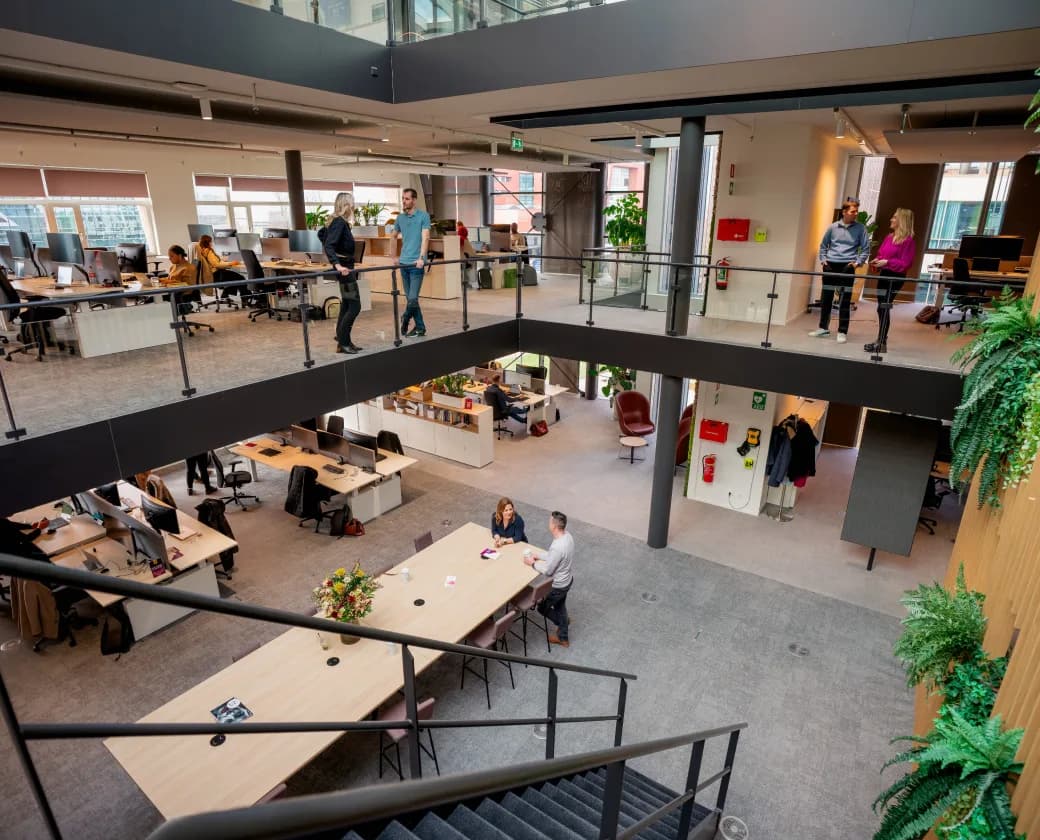Hiring a new colleague on a permanent contract is a big step. It means a long-term commitment and new responsibilities. If you want to hire staff, it makes sense to calculate carefully in advance. Discover the benefits, risks, and all associated costs.
Permanent staff bring stability and continuity. Employees get to know your organisation in detail, build lasting relationships with clients, and tackle more complex projects with confidence. They invest in their development within your company and contribute to long-term thinking. This engagement is immensely valuable.
Still, there are costs associated with hiring staff. An employee always costs more than just the gross salary. Employer expenses, absenteeism, holiday pay, pension, and other obligations quickly add up. Plus, there's the time and resources that recruitment, onboarding, and management demand. The total costs are often higher than you anticipate.
What does it cost to hire an employee on the payroll?
The gross salary is just the starting point of the costs. For every euro of gross salary, as a client, you pay on average 25 to 30 percent extra in charges. Think of social insurance, pension premiums, and legal contributions. An employee with a gross salary of 4,000 euros quickly costs you around 5,200 euros per month.
On top of that come the one-time recruitment costs. On average, you pay 15 to 20 percent of the annual salary. For an employee with a monthly salary of 4,000 euros, this amounts to 7,000 to 9,000 euros in recruitment costs. And there's always the uncertainty of whether you've chosen the right candidate.
Absenteeism is also an unavoidable factor. The average absence rate in the Netherlands is around four percent. Employees are thus sick for an average of ten days a year while you continue to pay their salary. In the case of long-term illness, this period can extend to two years during which you bear the full salary costs.
Moreover, many employers underestimate the administrative burden. Think of time registration and invoicing, leave registration, performance reviews, and development plans. These tasks cost HR and management an average of two to three hours per employee per month.

Hiring staff costs versus benefits
All costs must be weighed against the value an employee adds. A good employee usually earns back their salary within a few months. However, it generally takes three to six months for someone to become fully productive. During this period, you are investing more than you are getting out.
The break-even point is usually between the eighth and twelfth month. From then on, the employee genuinely contributes to the profit. Therefore, it's crucial that employees stay for at least two years or more. If they leave earlier, you risk incurring a loss on your investment.
Then there are development costs. Training and education stimulate growth and engagement, but require additional budget. You invest on average 1,000 to 3,000 euros per year per employee.

The hidden costs of recruitment
Recruiting and selecting by yourself takes more time than you think. Writing job advertisements, screening CVs, scheduling interviews and checking references are labour-intensive processes. All these steps take up valuable management time which directly translates into extra costs.
A bad hire is even more expensive. When someone leaves after six months, you not only lose the salary and recruitment costs, but also the invested time. Research shows that a failed hire can cost up to two to three times the annual salary in losses.
Hiring staff through RPO
Luckily, you don't have to do recruitment alone. By using RPO (Recruitment Process Outsourcing), you outsource the process to specialists who do this daily. Hiring staff becomes much more effective and efficient as a result.
HeadFirst acts as an extension of your HR team. We get to know your organisation and culture thoroughly and understand what type of person will be successful. Our recruiters take the time to represent your company authentically to candidates. This way, you increase the chance of the right match and reduce total hiring costs in the long term.
See also
Find the right professional quickly and carefully
Read how to combine speed, market knowledge and personal attention for optimal matches.
How can you recruit staff? Tips & strategies for employers
In this blog, we share practical tips, smart strategies, and inspiring examples to enhance your recruitment process.
Why completing applications at HeadFirst is more than just matching
HeadFirst fulfills requests strategically with speed, quality, and transparency, more than just matching.
